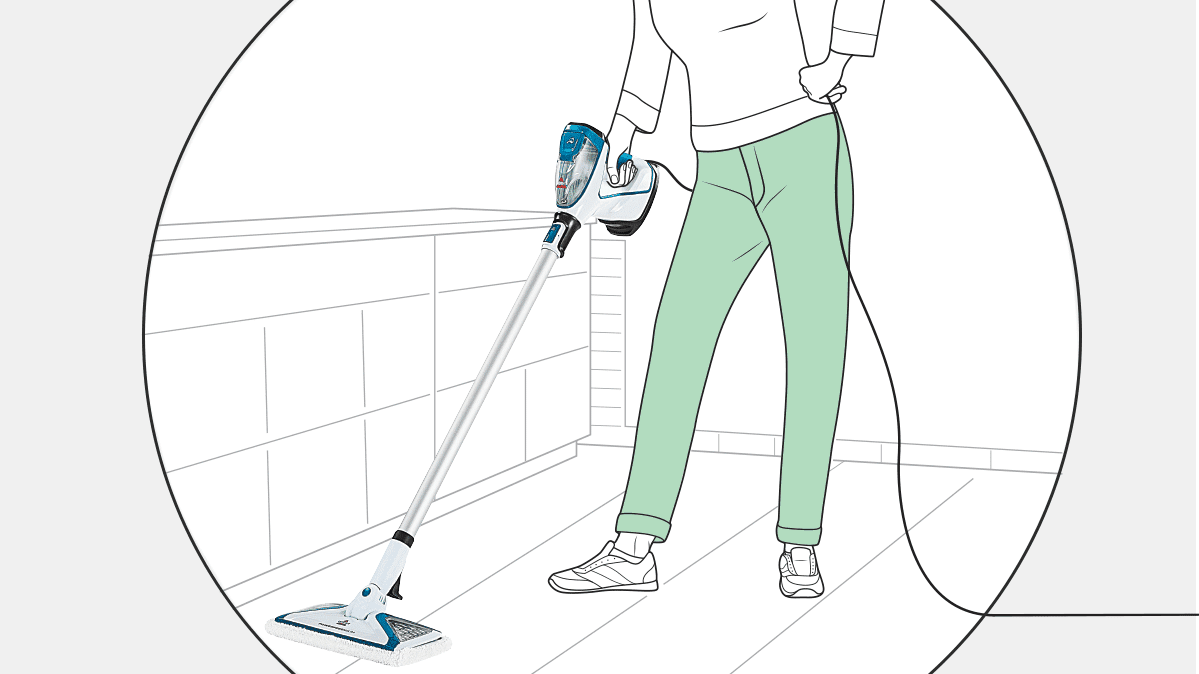
Even for non-wood flooring, you need to exercise caution. Stocki says it’s best to avoid using a steam mop on laminate, which is made of fiberboard, because the heat could damage the plastic surface. And linoleum is actually similar to wood in that it’s made of wood particles and linseed oil, so it’s porous and susceptible to moisture issues. It’s best to skip the steam and use a damp mop or cloth to clean instead.
Ceramic and porcelain tile can be tricky, too, even though they’re nonporous. Though the tiles themselves can stand up to the heat and moisture of a steam mop, the grout could be damaged, because hot water may loosen or change the chemical composition of the grout. So you’ll want to limit how often you use a steam mop on your tiled entry or kitchen floor.
For regular cleaning of ceramic and porcelain tile, use a sponge mop with warm water and a pH-neutral solution (check the label of the cleaner to see whether it is pH-neutral). Chemicals like ammonia or petroleum may damage your tile and grout, and void the warranty on your floors. For cleaning grout stains, CR recommends using a grout brush dipped in a solution of ½ cup of bleach to a gallon of water. (For more on all types of flooring, see our latest ratings and buying guide.)
What about vinyl floors? "The majority of vinyl is safe for steam mops," Stocki says. However, vinyl is made of plastic with a backing of wood particles, so it could still be susceptible to heat damage; check your steam mops' manual to see whether your model is recommended for use on vinyl.
"use" - Google News
May 05, 2020 at 05:34AM
https://ift.tt/35vhEmE
Why You Shouldn't Use a Steam Mop on Wood Floors - ConsumerReports.org
"use" - Google News
https://ift.tt/2P05tHQ
https://ift.tt/2YCP29R
Bagikan Berita Ini















0 Response to "Why You Shouldn't Use a Steam Mop on Wood Floors - ConsumerReports.org"
Post a Comment